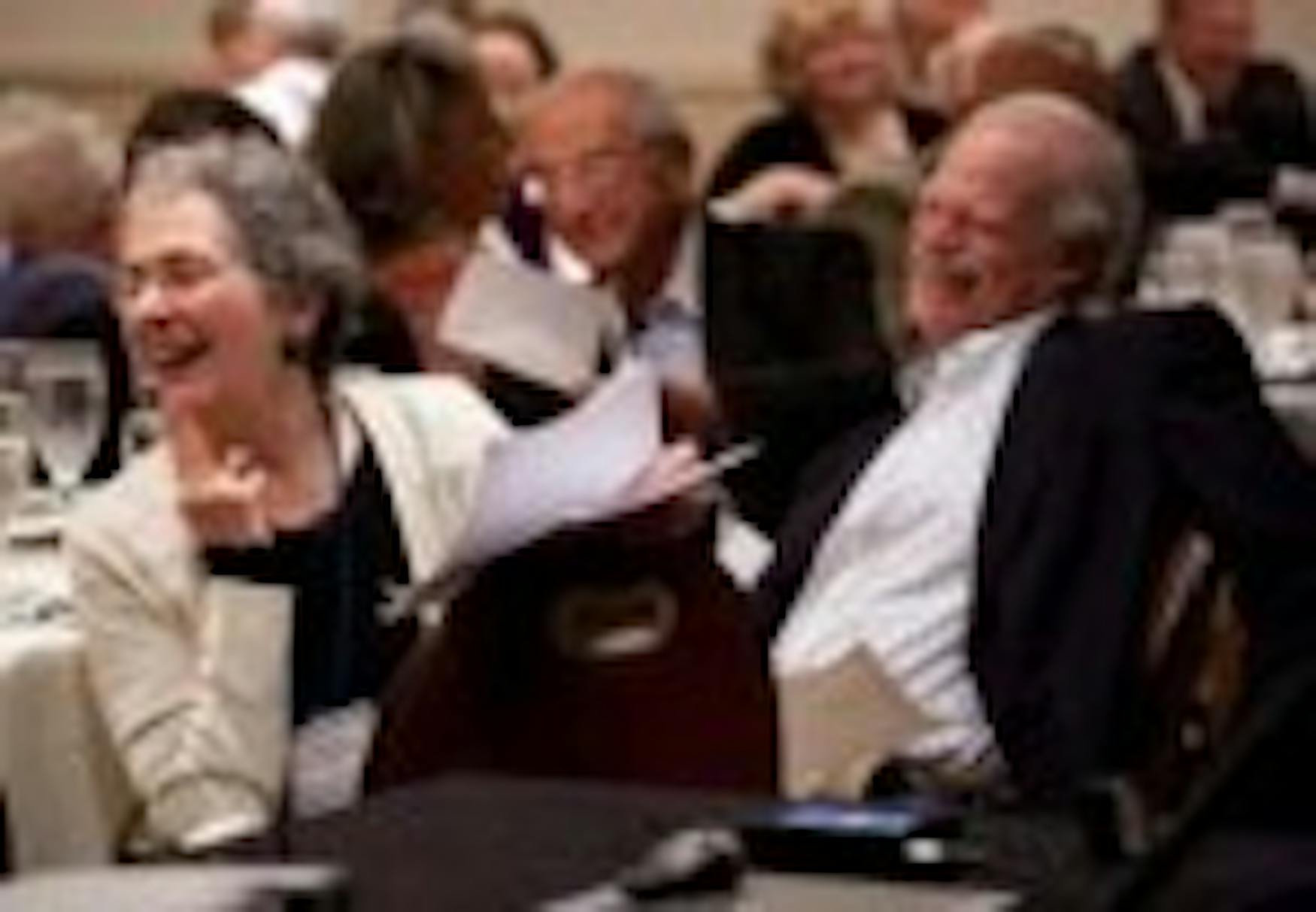First Brandeisians reminisce
The University's first graduating classes from the 1950s had a reunion this summer hosted by the Class of 1955
It is a beautiful, 75-degree day on the Great Lawn. Classmates gather in front of the Shapiro Campus Center chatting about how the campus has changed while they had been away while two friends embrace on the grass after not having seen each other. But today is not the first day of school in August, and these classmates are not college-age students returning to campus after summer vacation. It is Brandeis Reunion 2010, and about 1,000 Brandeis alumni from every decade have descended upon their alma mater, reminiscing with old friends about their time spent in Waltham. Every summer, Brandeis hosts a reunion for the classes that graduated anywhere from five to 50 years ago. This year, the Class of 1955, the students being celebrated, decided to invite all graduates of the 1950s-from the University's very first graduating class of 1952 through the Class of 1959-back to campus for a weekend together kicked off by a special dinner on Friday, June 11.
During that weekend, 130 members of the University's first eight classes returned to campus for a weekend of activities designated to celebrate the University in the fifties. This included themed dances, reunion dinners and special panels by University professors and '50s alumni on past and current events.
"Members of the Class of 1955 decided that rather than have a traditional 55th reunion, they would invite alumni from all of the '50s graduating classes to attend a first-ever '50s Reunion," Director of Development Communications David Nathan wrote in an e-mail to the Justice. In the Spring 2010 issue of Brandeis University Magazine, the Class of 1955 referred to itself as the University's "perennial freshmen" and invited all classes of the 1950s to "embark on a historical exploration of the first decade."
Among the visiting alumni were journalists, philanthropists, architects and actresses, many of whom were married to other Brandeisians, who despite their diverse experiences, all spoke about how much a Brandeis education had influenced their adult lives in very meaningful ways.
One of the first social events of the reunion weekend was the dinner for graduates of the '50s on Friday night. The lights warmly lit Levin Ballroom as the first graduates of the University shared dinner, following a blessing over the meal in Hebrew. The ballroom was filled with old friends reminiscing and new friendships beginning as classmates chatted among themselves.
What ties many of the 50s graduates together and what they spoke about most was the University's fledgling status at the time they attended the school. The University was founded in 1948 and was accredited by the New England Association of Schools and Colleges in 1954. When many of these alumni had applied to Brandeis, it had not yet been accredited. Vice-Chair of the Reunion Committee Judy Aronson '55 asked herself aloud, "We weren't accredited; how did your parents let you come to a school that wasn't accredited?"
The reasons for applying and attending the University varied greatly among the alumni. The most popular answer?
"We didn't know; we didn't really think it through," said Judy Diamond '55 with a youthful laugh, "It was wonderful." For many, including Diamond, the adventure of a school without established traditions was a thrill.
Some chose Brandeis because of its Jewish affiliation. Susan Prusky '55, the Chair of the '50s Reunion Committee, explained that after living with anti-Semitism, in her town, Kingston, N.Y., she found the idea of a university sponsored by the Jewish community very appealing, and at Brandeis she "relaxed as a Jew and became a human being," thinking "as a human being, not as a Jew first." For many, Brandeis became an oasis away from discrimination.
Others chose Brandeis because of its values.
"Brandeis was where I first heard and appreciated the concept of social justice, and that's a defining principle of what I do," said Elaine Ostroff '55, who made it her life work to incorporate handicap-friendly design into mainstream architecture by focusing on ensuring that handicap options are present in architectural designs.
"I try to influence professional design education, especially for architects to be more inclusive in their design so their design doesn't discriminate against people," she explained, reflecting fondly on the inspiration that the University provided her with.
Moreover, Ostroff was one of the pioneers of off-campus housing at the University. She explained that with about 11 other people, she was one of the first to live in a house on South Street that the students named the Roosevelt House. At one point, they even hosted Eleanor Roosevelt, who served on the Board of Trustees from 1949 until 1962, for dinner.
The University faculty was another factor that drew students to the school. "There were some giants, some really great professors," said Bret Schlesinger '57, who had transferred to the University from a state school in the Midwest.
"I wanted to come east, and I knew Brandeis had a good reputation," Schlesinger explained, recalling his time at the University as "really an incredible, incredible experience, . in many ways, mind-blowing."
The classes of the '50s share a unique bond-it did not seem as if any of them knew at the time that they were helping to build a community when they chose to attend this university, but their presence is still seen today. From the looks of their smiles during the weekend, it seems that many cannot wait to return for their 60th reunion.



Please note All comments are eligible for publication in The Justice.